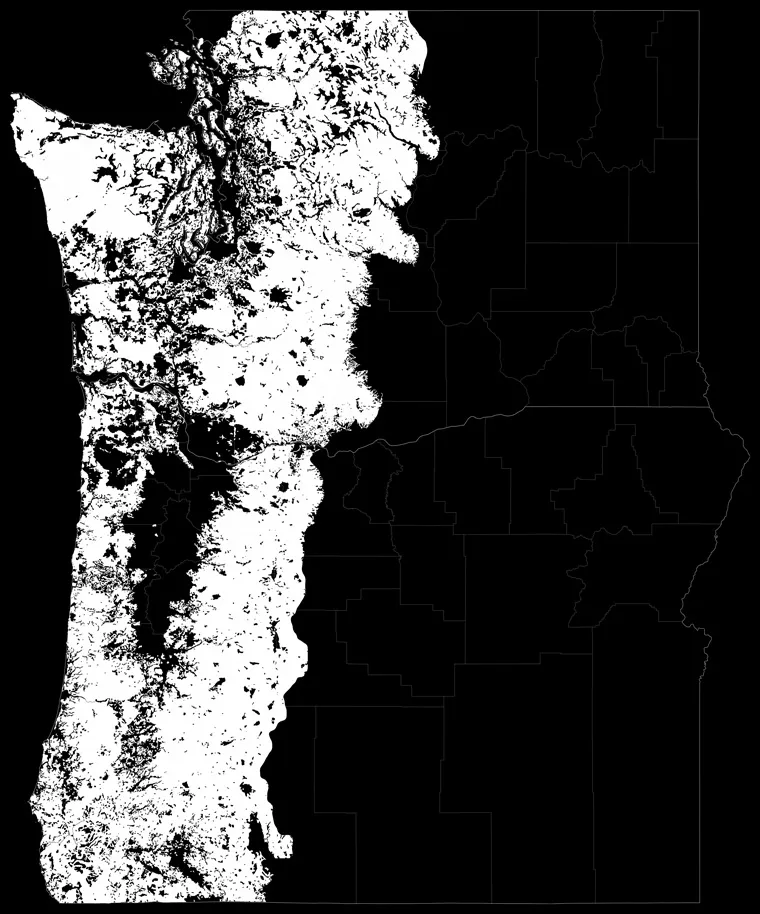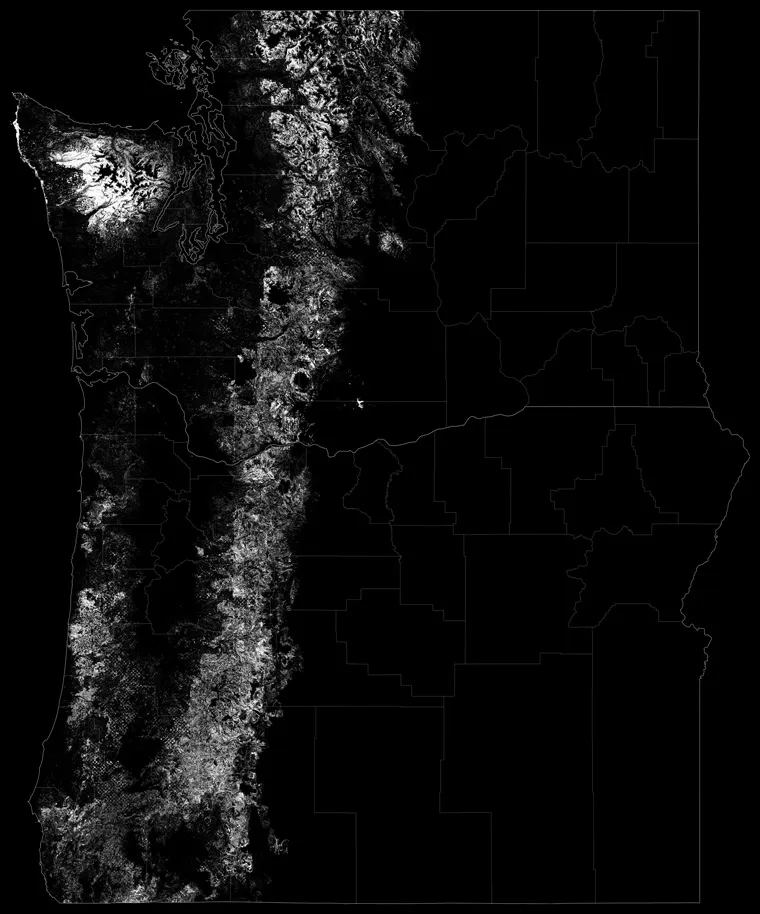Remaining Old-Growth
Forests within the coastal mountain ranges in Oregon and Washington have been radically altered following the westward expansion of European colonization beginning in the late 19th century. Approximately 72% of original forests have been degraded, largely through logging and other developments.1 On average, 65% (18.9 million acres, nearly the size of South Carolina) of these forests were considered old-growth forests,2 containing trees over 200 years old. Beginning in the 1930s, 40% of old-growth forests remained;3 by 2012, less than 21% (6 million acres, about the size of New Hampshire) remained.4 These maps, created from data provided by the U.S. Department of Agriculture, illustrate the loss of original forests. The map on the left, created from a 1930s survey of forest resources,3 consists of original and subalpine forests of varying age. The map on the right, created from the 2012 Northwest Forest Plan,4 contains forests over 200 years old. Together, these maps represent the coverage of original forests which have conceivably never been cleared.
References
- 1. Strittholt, J. R., DellaSala, D. A. & Jiang, H. Status of mature and old-growth forests in the Pacific Northwest. Conserv. Biol. 20, 363–374 (2006).
- 2. Dietrich, W. The Final Forest: The Battle for the Last Great Trees of the Pacific Northwest. 304 (Penguin Books, 1993).
- 3. Harrington, Constance A., comp. 2003. The 1930s survey of forest resources in Washington and Oregon. Gen. Tech. Rep. PNW-GTR-584. Portland, OR: U.S. Department of Agriculture, Forest Service, Pacific Northwest Research Station. 123 p.
- 4. Davis, R.J.; Ohmann, J.L.; Kennedy, R.E.; Cohen, W.B.; Gregory, M.J.; Yang, Z.; Roberts, H.M.; Gray, A.N.; and Spies, T.A. 2015. Northwest Forest Plan–the first 20 years (1994-2013): status and trends of late-successional and old-growth forests. Gen. Tech. Rep. PNW-GTR-911. Portland, OR: U.S. Department of Agriculture, Forest Service, Pacific Northwest Research Station. 112 p.

